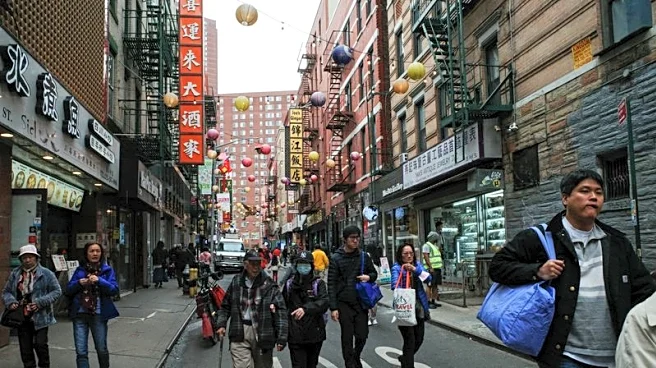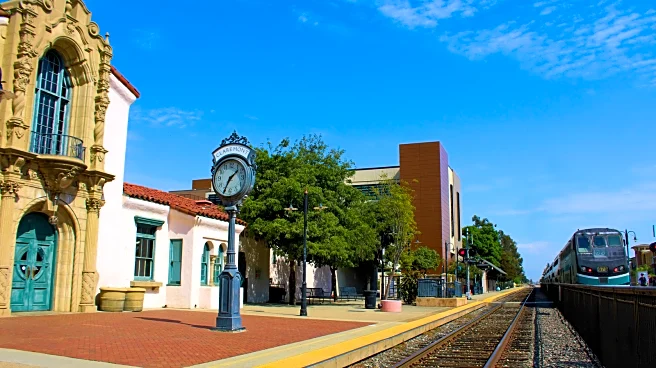What's Happening?
Preliminary data from the Census Bureau, analyzed by the Pew Research Center, indicates that over 1.2 million immigrants have exited the US labor force between January and July 2025. This decline includes both legal residents and undocumented workers, impacting sectors such as farming, construction, and home healthcare. Immigrants constitute nearly one-fifth of the American workforce, with significant representation in farming, fishing, forestry, construction, and service industries. The reasons behind this decline are not entirely clear, but stricter immigration enforcement and a halt in border influx under President Trump are contributing factors. The overall immigrant population is experiencing its first fall after the number of undocumented people reached 14 million in 2023.
Why It's Important?
The reduction in the immigrant workforce is slowing job creation and raising concerns about labor shortages across various industries, potentially affecting essential services. Immigrants play a crucial role in sectors like construction, where employment declines have been noted in about half of US metropolitan areas. The Riverside-San Bernardino-Ontario region in California recorded the largest fall of 7,200 jobs, while Los Angeles-Long Beach-Glendale lost 6,200. The construction industry, among others, is facing challenges in finding qualified and willing workers due to tougher immigration enforcement. This situation could lead to significant disruptions in essential services, including home healthcare and agriculture, where immigrants account for a substantial portion of the workforce.
What's Next?
The foreseeable consequences of this trend include potential strain on industries heavily reliant on immigrant labor. As the immigrant workforce continues to shrink, sectors such as home healthcare, agriculture, and construction may face increased difficulties in staffing. This could lead to higher costs and reduced availability of services, affecting millions of Americans who rely on these industries. Stakeholders, including industry leaders and policymakers, may need to address these labor shortages through policy adjustments or initiatives aimed at attracting and retaining workers.
Beyond the Headlines
The decline in the immigrant workforce may have deeper implications for the US economy and society. It raises ethical and cultural questions about immigration policies and their impact on communities. The shift could also influence long-term demographic trends and labor market dynamics, potentially altering the composition of the workforce and affecting economic growth. As industries struggle to adapt, there may be increased pressure on policymakers to reconsider immigration policies and their broader societal effects.














